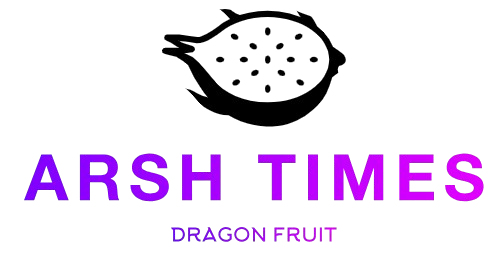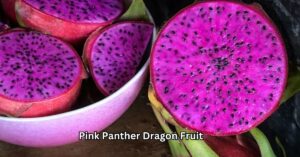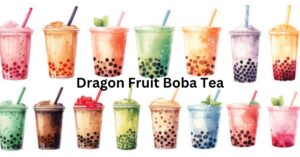Introduction
Pitaya, commonly known as dragon fruit, has surged in popularity worldwide thanks to its striking appearance and delightful taste. As consumer demand for this exotic fruit continues to grow, the University of California (UC) is leading the charge with groundbreaking research aimed at enhancing pitaya cultivation and overcoming the challenges faced by growers. This article explores the latest findings from UC, highlighting how these innovations are shaping the future of pitaya production.
Cultivar Development: Enhancing Flavor and Resilience
UC researchers are dedicated to developing new pitaya cultivars that boast superior qualities, ensuring both better taste and stronger resilience against environmental stresses.
Flavor Optimization
Scientists at UC are meticulously breeding pitaya varieties to elevate their flavor profiles. By selecting for increased sweetness, enhanced aroma, and improved overall taste, these new cultivars promise a more satisfying sensory experience for consumers.
Disease and Pest Resistance
A key focus of UC’s research is to create pitaya plants that are more resistant to common pests and diseases, including scale insects and fungal infections. Developing such resilient cultivars reduces the dependency on chemical pesticides, promoting more sustainable and eco-friendly farming practices.
Yield Improvement
To ensure economic viability for growers, UC is working on identifying and propagating pitaya varieties that produce higher fruit yields. Increased productivity not only benefits farmers but also helps meet the rising market demand efficiently.
Sustainable Cultivation Practices: Ensuring Long-Term Viability
Sustainability is at the heart of UC’s approach to pitaya cultivation, with researchers implementing strategies that minimize environmental impact and promote resource conservation.
Water Conservation Techniques
With water scarcity becoming a pressing issue, UC scientists are exploring water-efficient irrigation methods such as drip and deficit irrigation. These techniques optimize water usage, reducing waste and ensuring that pitaya cultivation remains viable even in water-limited regions.
Integrated Pest Management (IPM)
UC is refining Integrated Pest Management strategies to control pests naturally. By utilizing natural predators, beneficial insects, and biological control methods, the reliance on chemical pesticides is significantly reduced, fostering a healthier ecosystem.
Organic Farming Methods
In pursuit of organic production, UC researchers are investigating soil health improvement, fostering beneficial microorganisms, and implementing natural pest control strategies. These efforts aim to produce high-quality pitaya while adhering to organic farming standards.
Post-Harvest Innovations: Extending Shelf Life and Preserving Quality
Maintaining pitaya quality from harvest to market is crucial for its success. UC’s research is focused on developing methods to preserve the fruit’s freshness and extend its shelf life.
Optimal Harvesting Practices
Determining the precise moment for harvesting essential for maximizing fruit quality and longevity. UC studies are identifying the ideal maturity stages to ensure that harvested fruit retains its best flavor and texture.
Advanced Handling Techniques
Proper post-harvest handling is vital to minimize damage and maintain the fruit’s freshness during transportation. UC is developing best practices for handling ensuring that the fruit reaches consumers in prime condition.
Innovative Storage Solutions
To further extend shelf life, UC is exploring advanced storage technologies such as controlled atmosphere storage and modified atmosphere packaging. These innovations help maintain the quality of pitaya during storage and distribution, ensuring that consumers receive top-notch fruit.
The potential of Pitaya (Dragon Fruit)
| Feature | Details |
| Nutritional Powerhouse | Rich in antioxidants, vitamins (C, B1, B2, B3), minerals (iron, calcium, magnesium, phosphorus), fiber, and healthy fats (omega-3 & 6) |
| Health Benefits | May improve heart health, boost immunity, aid digestion, stabilize blood sugar, and promote healthy skin |
| Culinary Versatility | Enjoyed fresh, in smoothies, juices, salads, desserts, and even savory dishes |
| Economic Potential | High-value crop with growing global demand, offers income opportunities for farmers |
| Sustainability | Can be grown in arid and semi-arid regions with minimal water requirements |
| Unique Appearance | Vibrant colors and unique texture make it visually appealing |
Market Analysis and Economic Feasibility
Beyond agricultural practices, UC’s research encompasses comprehensive market analysis and economic studies to support the growth of the industry.
Understanding Consumer Preferences
UC researchers are delving into consumer preferences regarding different pitaya cultivars, examining factors like flavor, color, and size. Understanding these preferences helps in developing varieties that cater to market demands effectively.
Identifying Market Trends
By analyzing current market trends, UC is identifying emerging consumer demands and exploring new opportunities for pitaya. This includes tapping into niche markets and developing value-added products that can enhance the fruit’s market presence.
Assessing Economic Viability
Economic analyses conducted by UC assess the profitability of farming across various regions and cultivation scenarios. These studies provide valuable insights for growers, helping them make informed decisions that enhance their profitability.
Benefits of UC Research
The extensive research conducted by UC scientists offers numerous advantages to the industry, benefiting growers, consumers, and the environment alike.
Superior Fruit Quality
Through the development of enhanced cultivars, optimized harvesting practices, and advanced storage technologies, UC ensures that consumers receive high-quality pitaya with superior taste and freshness.
Enhanced Sustainability
UC’s focus on sustainable cultivation practices helps minimize the environmental footprint of pitayas farming. Techniques such as water-efficient irrigation and integrated pest management promote eco-friendly production methods.
Increased Economic Profitability
By improving production efficiency, enhancing fruit quality, and uncovering new market opportunities, UC research significantly boosts the economic viability of farming, making it a more attractive venture for growers.
Driving Innovation
UC’s commitment to research fosters continuous innovation industry. The development of new technologies and farming practices paves the way for ongoing advancements and long-term industry growth.
Conclusion
The University of California is playing a pivotal role in transforming the industry through its comprehensive and innovative research. By addressing critical challenges and pioneering new solutions, UC scientists are ensuring the sustainable and profitable cultivation . These advancements not only support growers and businesses but also guarantee that consumers enjoy access to high-quality, sustainably produced dragon fruit. As UC continues to lead in research, the future of this vibrant fruit looks promising and bright.






Pingback: Unlocking the Secrets of Dragon Fruit: A Complete Guide to the Best Hylocereus Varieties 2025 -
Pingback: Unleash the Dragon: Explore the Colorful World of Dragon Fruit Workshops 2025 -